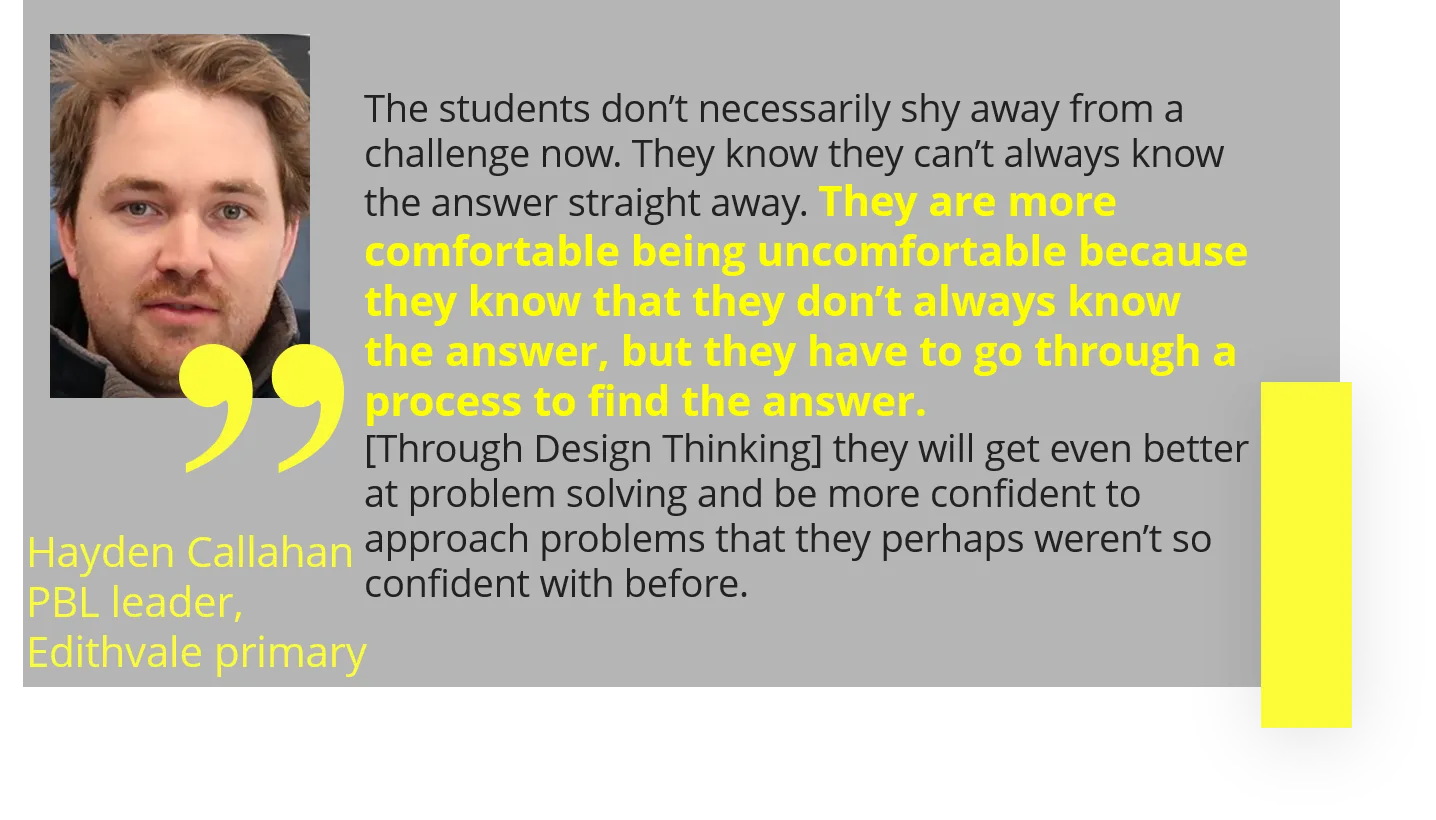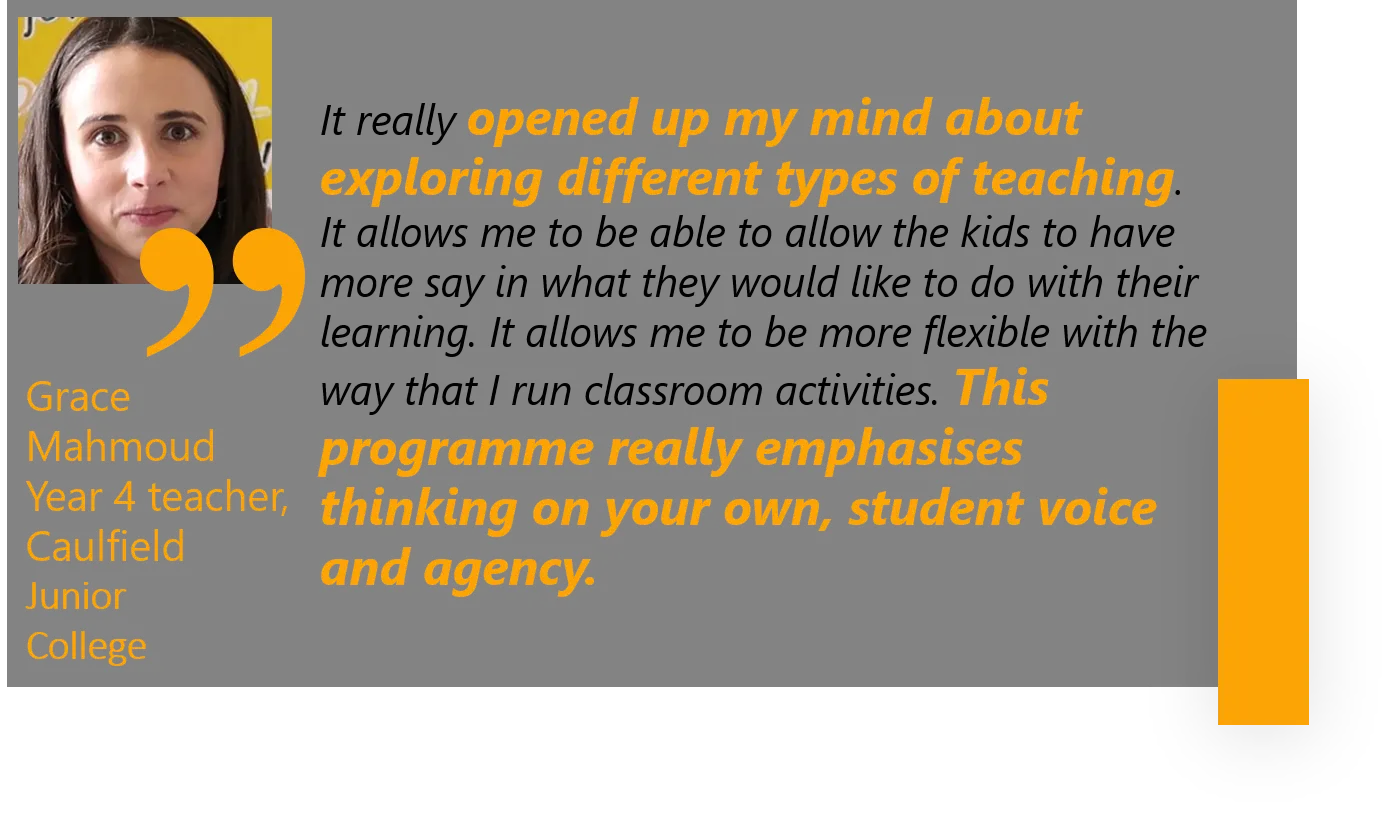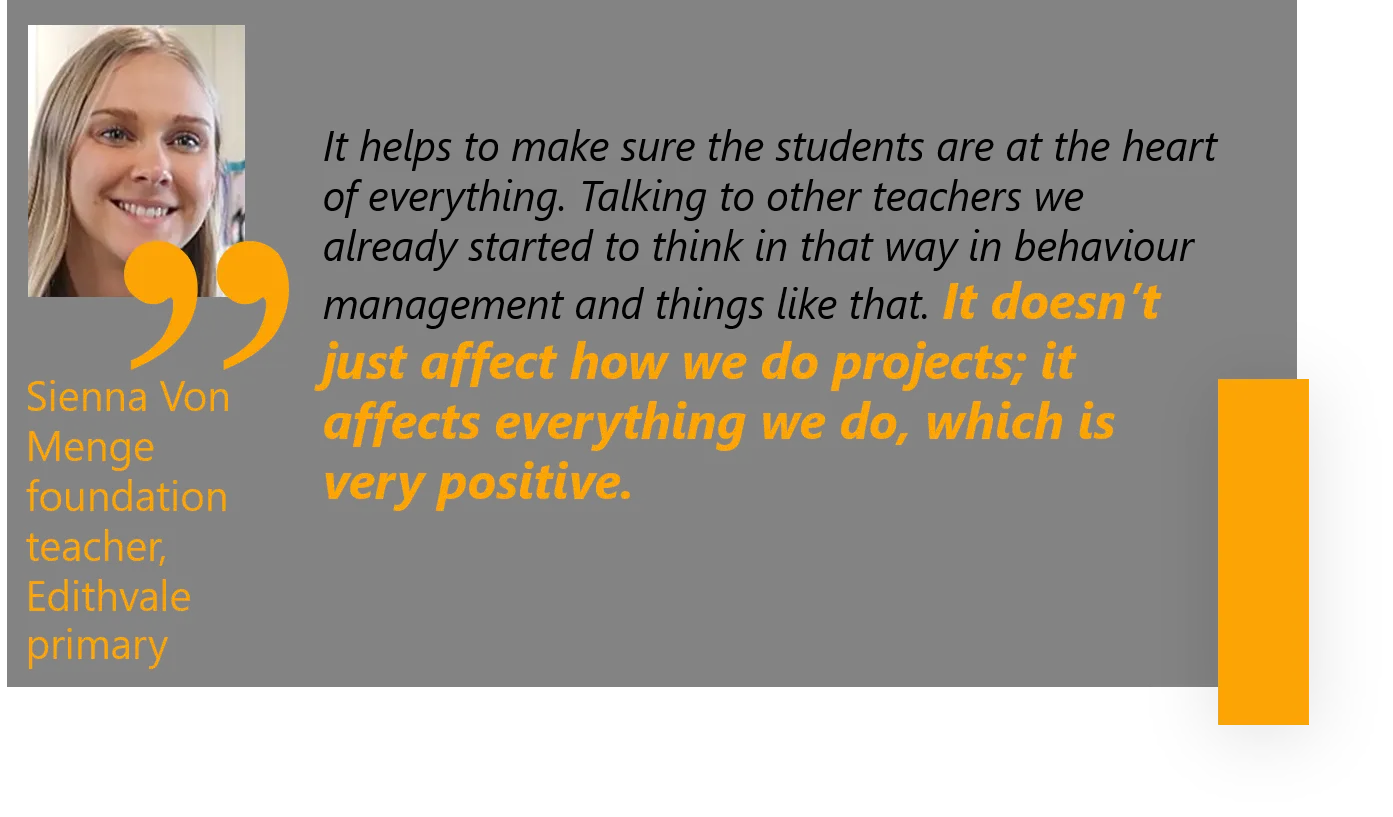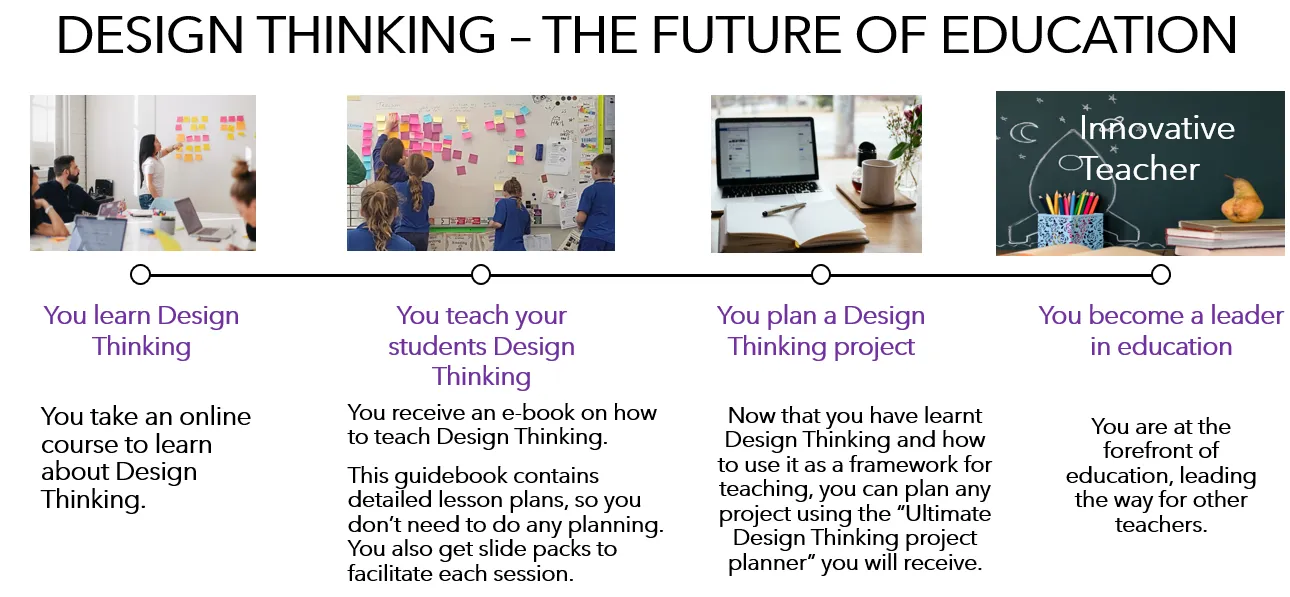Design Thinking - the Future of Education
Watch our on-demand webinar on "Design Thinking - the Future of Education" to learn how you can harness this powerful framework to create a better education for your students.
Why is Our Education System So Critical?
Education shapes our future.
As a teacher, you know that what you do is not only a profession; it is a calling. You are performing one of the most important roles within our community by shaping the next generation's minds. You are driving the future of our country.
The Need to Reinvent Education
Unfortunately, our education system still operates on a twentieth-century traditional pedagogy where education has been about transferring knowledge to students. This pedagogy is designed for past requirements and doesn’t meet current needs.
Today, knowledge is free and easily accessible for all through the internet. This democratisation of education is great news since now, anyone with internet access can learn almost anything they want. Furthermore, learning is not just an option anymore; it is a must. We all need to become lifelong learners to adapt to the constant changes within the job market.
However, with globalisation and technology transforming the world rapidly, merely transferring knowledge is no longer enough to succeed.
The twenty-first century brings with it a new kind of economy that requires different types of skills and a new mindset.
Consequently, organisations are looking for employees that are talented at creative and critical thinking, problem-solving, collaboration, and communication; businesses are looking for workers with an innovative mindset.
A 2019 LinkedIn study of the expertise needed most by companies found that creativity was the top skill to develop (Van Nuys, 2019), and according to a PricewaterhouseCoopers survey, 77 per cent of CEOs struggle to find the innovative candidates that they need for their organizations (PwC, 2020).
An IBM study in 2010 interviewed over fifteen thousand CEOs from sixty countries and thirty-three industries were interviewed. They found that creativity was named the most important leadership quality to meet the challenges of increasing complexity and uncertainty in the world (IBM, 2010).
The demand for employees with these abilities will only continue to increase due to the exponential growth in automation, machine learning and artificial intelligence. Creative thinking and an innovative mindset are the new basic skills that every child today needs to develop.
So how can we prepare the younger generation for the future of work? By adopting a new way of learning and teaching that meets the needs of the twenty-first century.
The Transformation Starts With You!
As a teacher, you are a role model and “shaper of minds” and have the power to ensure your students get what they need from their education to reach their fullest potential. You can foster an environment in your classroom that cultivates creativity and a higher level of thinking.
You are one of the most significant factors in a successful transformation from traditional to innovative pedagogy. By creating a meaningful, authentic, rich, student-centric learning experience for your students, you can empower them and create tomorrow’s innovators.
There is no need to wait for policymakers to slowly change existing policies and drive a top-down transformation of this massive education system. In fact, there is no time to waste: our children need this kind of education now.
This transformation in our education system starts with you. It is time to bring your classroom to the forefront of schooling and provide your students with the learning experience they need.
Design Thinking is the Answer
At a high level, Design Thinking is a problem-solving methodology, mindset, and a set of tools that enables you to come up with innovative solutions. Learning and practising Design Thinking will help your students develop the skills they need for success today, cultivating aptitude to problem-solve, curiosity, creative and critical thinking, resilience, empathy, and ability to collaborate.
Moreover, Design Thinking goes beyond the specific knowledge-focused fields and lays a strong foundation for success in any career.
This process also develops a growth mindset. For example, Design Thinkers know that failure is part of the journey: they learn from it and start again.
As you probably know, today, we have complex global problems to solve, such as food security, children’s education, gender equality, and global warming, to name a few. These problems can’t be solved using the same thinking that created them: we need to develop a different kind of thinking. Design Thinking develops creativity and teaches us to find unusual connections, enabling us to arrive at unique solutions.
Many organisations already recognise Design Thinking as a powerful way to drive successful outcomes. The Bill and Melinda Gates Foundation uses this methodology to successfully solve some of the most complicated problems we face today, such as polio eradication. Moreover, many start-ups and companies such as Airbnb and Netflix also use Design Thinking to drive their success.
Research Declares Design Thinking as the Paradigm Shift
Lesley-Ann Noel and Tsai Lu Liub from North Carolina State University explored whether Design Thinking should be used as the new twenty-first-century education paradigm at primary schools (Noel, 2016).
These researchers found that Design Thinking students develop collaborative problem-solving skills, creative and critical thinking, empathy, social skills, teamwork skills, and a growth mindset. Furthermore, they concluded that Design Thinking challenges students to find solutions to complex problems and supports students' academic performances.
This research affirms that Design Thinking educators can make a lasting impact on students' life skills by teaching them this process. It supports the inclusion of Design Thinking as professional development for teachers, as it offers strategies for improving teaching and learning. This type of professional development will expand and enhance teachers’ capabilities by helping them use Design Thinking to deliver existing content in a way that improves students’ academic performances.
The research concludes that exposure to Design Thinking education at the primary school level lays a solid foundation that would benefit all children, leading to greater engagement at school and contributing to their future success in their professional lives.
About ”Design Thinking - the Future of Education" (Previously known as "PBL and Beyond")
“Design Thinking - the Future of Education” revolutionise the current pedagogy. This programme takes you on a personal journey to discover how you can amplify your impact and create tomorrow’s leaders and change-makers. This powerful transformation is accomplished by harnessing the power of Design Thinking.
This innovative professional development programme, co-designed with teachers, helps you take your teaching to the next level, equipping you with the knowledge, skills, and mindset required to encourage deeper learning in your classroom. It will transform you into a Design Thinker.
The outcome of this programme will be the metamorphosis of your classroom into an active entrepreneurial environment where students collaborate and think creatively to solve real-world problems and bring their ideas into reality. You will create tomorrow’s innovators.
Students’ Amazing Learning Experiences
By participating in “Design Thinking - the Future of Education,” your students will shift their mindset. They will develop twenty-first-century skills and become:
✅Engaged in their learning
✅Able to exercise their voice and agency
✅Comfortable asking clarifying questions
✅Inquisitive about the world around them
✅More creative in their thinkingConfident and resilient
✅Able to think critically about what they hear, say, and do
✅Able to consider other people’s points of view and emotions
✅Deep thinkers, able to come up with “questions about questions”
✅Collaborative, and able to actively and respectfully listen to each other
✅Reflective on their work in all subjects at school (literacy, numeracy, etc.)
✅Problem-focused and have developed a good approach for problem-solving
✅Open to sharing and getting feedback, happy to provide constructive feedback to their peers
✅Skilled at performing data synthesis and able to drive meaningful insights from gathered information
“Design Thinking - the Future of Education” is an exceptionally effective strategy for teaching twenty-first-century skills and providing our young learners with the vital education they need and deserve.

Your Teaching Experience Will Improve
“Design Thinking - the Future of Education” offers strategies to help you convert your lessons into deep, meaningful learning experiences that truly inspire and engage your students.
You’ll learn how to turn your classroom into a space where creativity and collaboration are encouraged. It also shows you how to embed aspects of project-based learning into daily classroom life for you to encourage greater learning across the curriculum.

Bringing Your School to The Forefront of Education
This programme is designed to help schools meet the changing needs of twenty-first-century learners.
A high-impact programme that transforms the school across all year levels.
It positively impacts the school’s culture and brings your school to the forefront of education.

How Does "Design Thinking - the Future of Education" Work?
“Design Thinking- the Future of Education” can be implemented at all levels of education. By creating a truly relevant curriculum, educators across the entire spectrum of formal and informal education will have the tools they need to prepare our young learners for their future.
Taking your teaching to the next level takes time and effort. It doesn’t happen overnight: it requires commitment, having an open mind, being passionate about your students, being curious and playful, being open to taking risks and being collaborative. You need to be willing to embrace the new and let go of the old.
In addition to your personal and professional growth as you progress on this journey, when applying what you have learnt to your teaching, you will change your students’ views of what education can and should be.
“Design Thinking - the Future of Education” is an easy-to-follow programme. It contains the information, classroom examples, and practical support needed to make this change while also enjoying the journey. It will take you through easy-to-implement strategies for making your classroom into an engaging learning environment.
It will develop your understanding of this way of learning and empower you to raise students’ achievements in your classroom. It will enable a deeper learning experience for both you and your students and encourage students to develop a greater interest in learning.
Watch our on-demand webinar on "Design Thinking - the Future of Education" to learn how you can harness this powerful framework to create a better education for your students.
“Design Thinking - the Future of Education” Programme:
